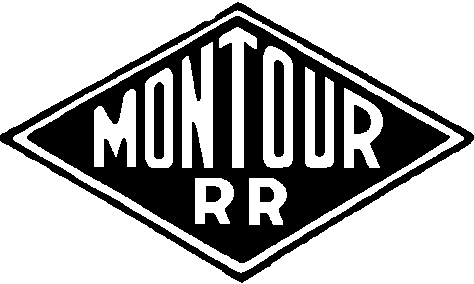Montour Railroad
Mileposts
Bridges
History
Maps
Roster
Mines
Links
Gallery
Working on the
Montour
Schaeffer Stories Sposato
Stories
Employees
Railroading
101

|
|
Tim
Sposato Stories
High-Lows - Couplers
A while back mention was made of train having an undesired uncoupling
while on the road. The term, high-low, referred to the coupler height
matchup between any of the cars/caboose/ engines in the consist. If one
of the couplers was considerably lower than the other, a potential
“hi-lo” existed. The causes for a low hanging coupler was
generally from hard coupling impacts while being loaded at
the mine. I recall hearing many hard impacts echoing in the valley at
#4 mine , all hours of the day and night. Single cars or cut of
cars dropped by the car dropper might get away account of a bad order
hand brake or an ill timed use of the hand brakes. Sometimes it
may have been several impacts or just a gradual debilitating
operating condition that would eventually result in the hi-lo condition.
The defect was different depending on the cars design. The term
‘carrier iron” was from the earlier days of railroading. Majority of
cars after the turn of the century were equipped with fabricated,
riveted steel or cast steel carriers. These may have been a solid
casting that the coupler past through to mate up with the draft gear
assembly, or it could be designed to have the coupler and draft
assembled as one and lifted up into position. This technique
would require bolts to hold the carrier in place to support the
coupler and allow the shank to rest on.
Once this hi-lo was in place and no one on the train crew spotted
it during the train build up, it would only take some rough track with
low joints to cause the uncoupling. The cars rocking
combined with a lower that desired rail joint would permit the low
knuckle to slip out of the grip of its companion, causing
separation and then parting of air hoses thus bring the train to
an emergency stop.
Henderson Hill was a common location for hi-lo’s prior to the newer
rail being installed. Train crews would try to re-couple and go, hoping
no more low joints were ahead or they used the tie plate trick by
sliding the plate between the carrier and coupler, holding it in place
with the use of spikes dropped through the plates spike holes. If the
carrier was too badly damaged, then the dispatcher was notified to
change their train orders allowing them to move a front portion of the
train to Cowden siding for set off near the road crossing for the car
knockers to come repair later. The engines would then return
light to retrieve the rear section and doubling the train together once
they reached Cowden again. This only worked if the bad carrier was on
the east end of the car, if on the west end a chain coupling would be
used to move the car. Both of these methods were time consuming
and costlier in crew hours and delays.
Hi-lo’s could originate from any mine or location, but generally didn’t
expose themselves until on a hard, uphill pull on rough rack. Trains
from #10 mine would be shoved out to the main and rolled downhill
to #4 Mine Hills, so its hi-lo’s would appear on Henderson Hill thus
making this Hill the most notorious for the higher percentage of these
to occur. They did occasionally occur at other locations as well.
Westland had its share with the cars being set out at the west end of
Morris Mine spur track for repair.
Wet weather, regardless of seasons, increased the low joint
syndrome. Winter months ground was too frozen to effectively raise and
tamp low joints. In this case the spikes would be removed in both
directions of the joint, distance depended on situation at hand. After
the rail was leveled, predrilled plywood or oak blocks slightly larger
than the plate would be placed on the ties and then the tie plate
tapped back under the rail. Extra long spikes used in certain bridge
decking would be spiked through the ‘shims’ and hopefully get a decent
bite into the tie. On occasion if the shim stack was too thick, half
the shims would be spiked to the tie then the other shims/plate
spiked to the lower shims using the longer spikes……not a good design,
but enough to allow trains to pass until a more permanent repair could
be done.
In summary, hi-lo’s were common of the Montour, but not near so on the
majority of railroads. This is just another uniqueness that we got to
see on the Mighty “M”, adding to the legend of its rich history.
The photos above show a recreation of a hi-lo repair using the MRR #815
hopper with the cast steel striker. This was a good carrier iron, so
the coupler is higher than normal once I inserted the plate and
spikes. For authenticity, I used original MRR spikes and tie
plate.
TimS.
|
 Montour
Railroad
Montour
Railroad 